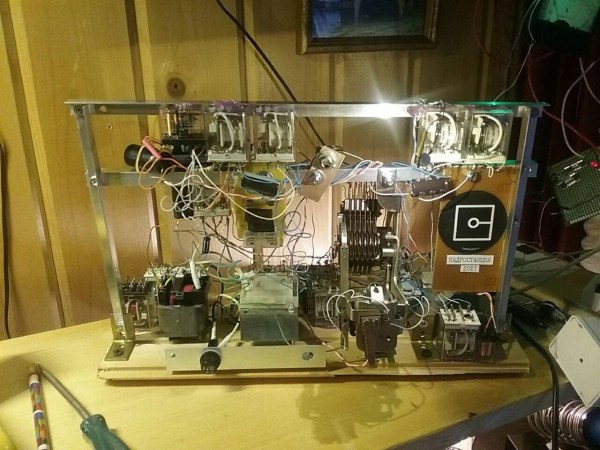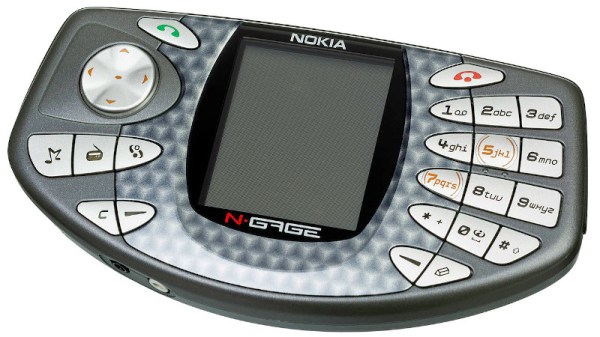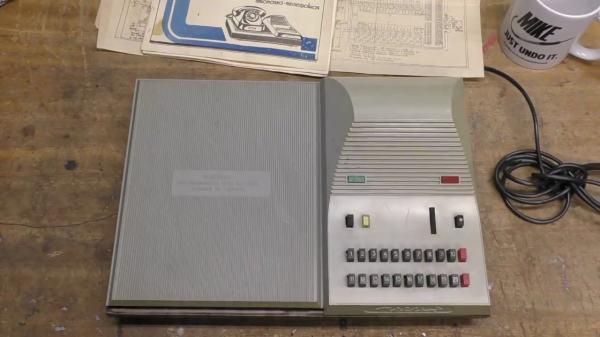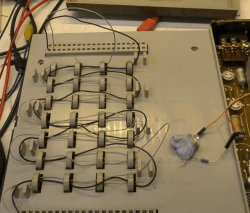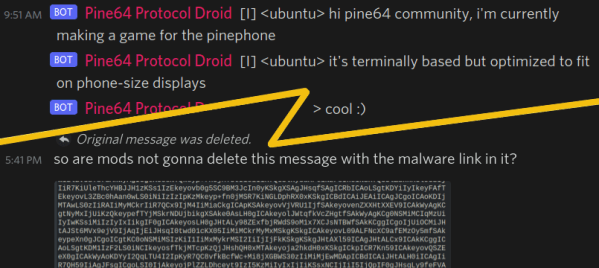While rarely seen by users, the technology behind telephone exchanges is actually quite interesting. In the first hundred or so years of their existence they evolved from manually-operated switchboards to computer-controlled systems, but in between those two stages was a time when dialling and switching was performed electromechanically. This was made possible by the invention of the stepping switch, a type of pulse-operated relay that can connect a single incoming wire to one of many outgoing wires.
Public telephone exchanges contained hundreds of these switches, but as [dearuserhron] shows, it’s possible to make a smaller system with way fewer components: the Cadr-o-station is built around one single stepper switch. Although it looks rather complicated, the only other components are a bunch of ordinary 24 V relays and a few power supplies. Together they make up a minimal telephone exchange that connects up to ten handsets.
It doesn’t have all the functionality of a larger system however, as only a single voice circuit is made to which all phones are automatically connected. Still, it does allow users to dial a number and let the other phone ring, which might be good enough for a home or indeed the hackerspace where it’s currently sitting. It’s also a fine demonstration of how relatively simple technology can be applied to make a surprisingly complex system.
[dearuserhron] wrote an in-depth article on the workings of electromechanical telephone exchanges, which might come in helpful to anyone who’d like to design such a system for their own home. For a more general introduction into analog phone technology, check out our analysis of a 1970s rotary telephone.
Continue reading “The Simplest Electro-Mechanical Telephone Exchange That Actually Works”

